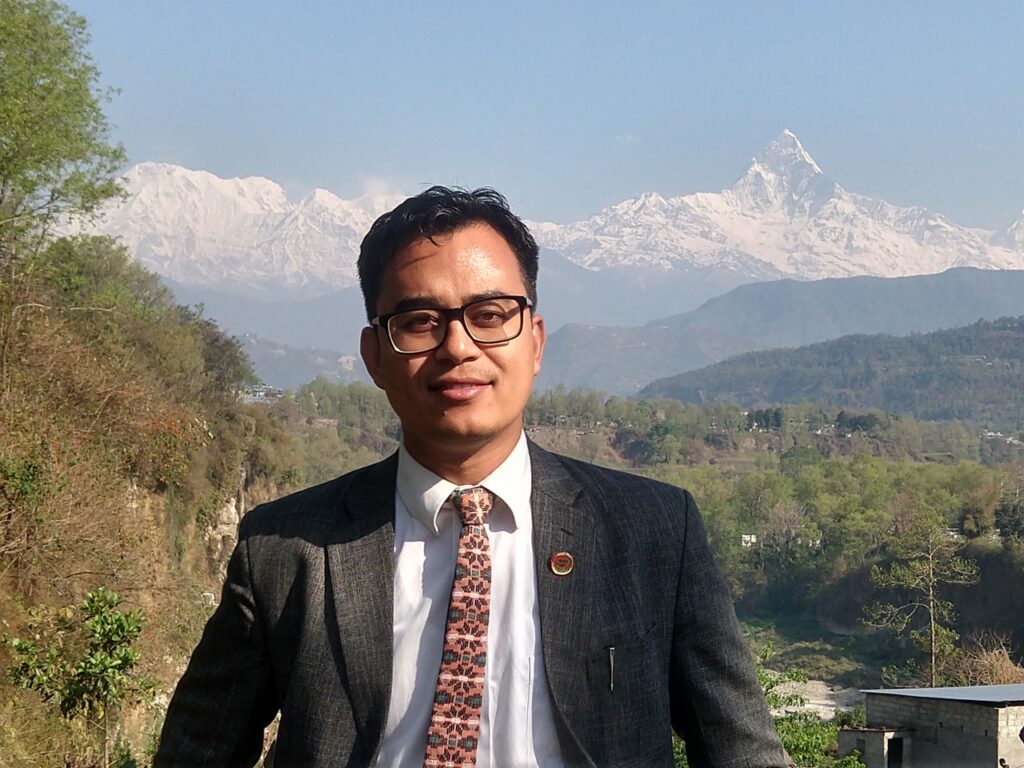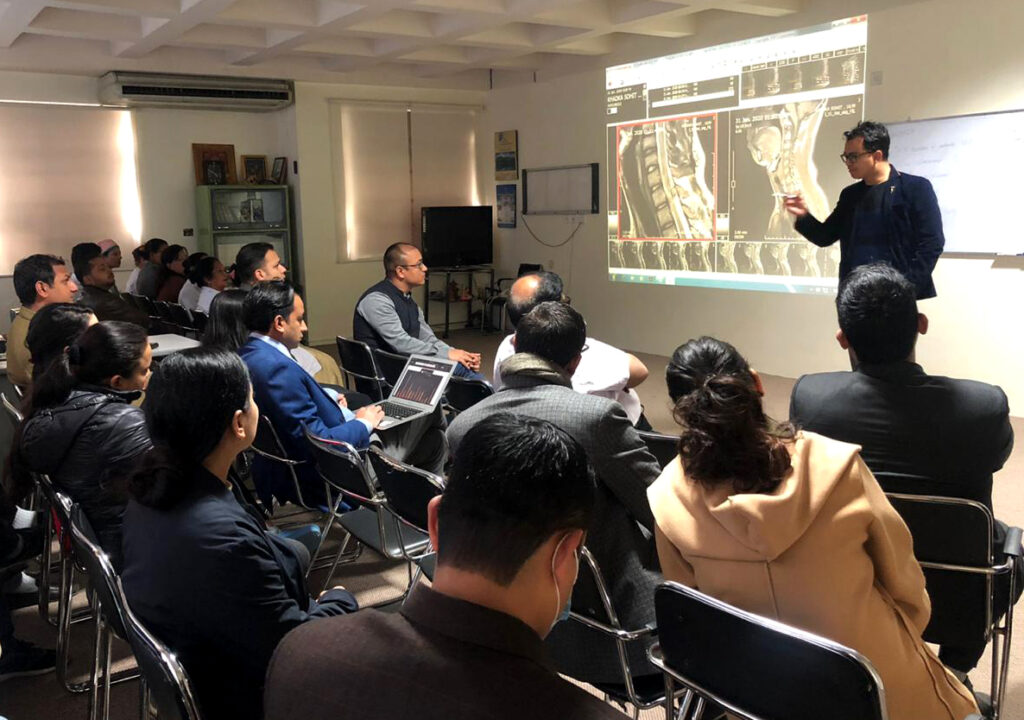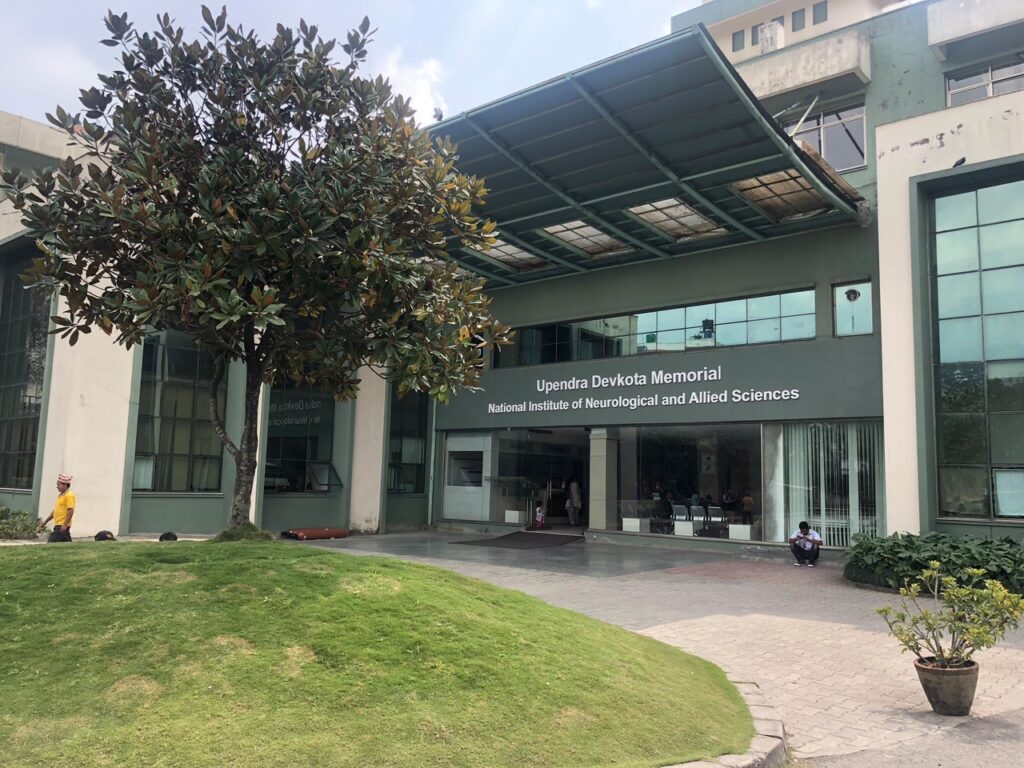How Research4Life helps save lives on a neurosurgery ward
August 2019 in Nepal. Neurosurgeon Pratyush Shrestha is at work when a case comes in that he’s never seen before: a man has had his head pierced by an iron rod. It seems impossible that he will survive. Luckily, Research4Life provided doctor Shrestha with the necessary information to successfully operate the patient, who, remarkably, is completely fine today.
Pratyush works in a neurosurgery hospital in Nepal’s capital of Kathmandu, where he and four colleagues look after patients with neurosurgical and neurological ailments. The most common conditions they treat are brain tumors and spine issues. There are some pediatric cases as well, as well as patients with aneurysms, epilepsy or seizures. Unexpected cases can always come in, and so it is important that the doctors stay up to speed with the latest knowledge. “Neurosurgery is a rapidly evolving field. You need to have recent information to keep up,” Shrestha says.
Shrestha and his team get their information through Research4Life, a platform that offers free or low-cost access to scientific and professional resources from the world’s best publishers. Having access to Research4Life has also helped him to become an associate professor at Kathmandu University.
I can’t imagine being able to do that without Research4Life, as I needed to have at least three scientific publications to become an associate professor. We can’t always buy the latest books and journals, so Research4Life is really our only source of current information. It allows me to read what I need to read to be able to stay up to date.
Finding up-to-date scientific information
Pratyush also credits Research4Life for the successful operation he performed on the man with the pierced head, an event that was covered in Nepali media. “I was on call when the patient came in after an accident at a construction site. A machine he was using stopped functioning, so he bent down to see what was wrong. A steel rod suddenly disengaged and went straight through his head, impaling his brain.” The man was immediately hemiplegic.
I was the most senior person present at the hospital, but it was a totally new case for me. So while the patient was being prepared for surgery, I had to do a very quick literature review. I found an article on a similar case in India in Pubmed. Thanks to the full-text that I got via Research4Life, I was able to make a plan for the surgery.”
It was a success. Over a year later, the patient has fully recovered.
Getting up-to-date information wasn’t always so simple. “When I was a medical student, we had find books and journals in the library, which were about 8 to 10 years old. For my first case report, I had to work offline, it was a very tedious process.”
To be able to perform research and build on existing knowledge, you also need access to that knowledge. Many academic institutions in Nepal are registered to Research4Life. Shrestha: “Here, we can’t pay for scientific journals which aren’t open access. Research4Life has helped in the development of most medical graduates in Nepal, since they need it to be able to find sources and complete their theses.”
An important mentor
Shrestha grew up in Dhankuta, a village in Eastern Nepali, though his parents sent him to a school in Kathmandu from a young age, so he could get a better education. He later decided to go to medical school. “I specialized in surgery, and was introduced to Professor Upendra Devkota, the country’s most renowned neurosurgeon, who passed away in 2018. Shrestha’s hospital is named after him. “I was assisting doctor Devkota in removing a spinal tumor when I suddenly realized that I wanted to do this all my life.”
In neurosurgery, no case is simple. “Every patient is a new challenge for us. I always put my patients first, and I imagine what I would do if they were my family, and then treat them accordingly. In the past, Professor Devkota would give me guidance, but now it’s just the five of us. I have to rely much more on myself to make the right decisions for my patients. It’s a big responsibility.”
Dealing with the pandemic
The coronavirus pandemic posed an additional challenge at the hospital. “The first nine months, we had to treat COVID-19 patients in our neurological ward. Luckily, things are going better now as the vaccination campaign is in full swing. However, this also means that we now have a lot of patients coming in who had their operations delayed in the past year.”
In a neurosurgical emergency, hours and even minutes often matter, so there isn’t always time to test incoming patients. The risk of getting infected with COVID-19 was always present for Shrestha. “On top of that, my parents live with us and take care of my children, aged nine and seven, so I was very worried that they might get infected through me.” With two children and a wife who works as a pathologist, the family has to organize themselves carefully.
“I am lucky enough that I only work in one hospital. I am on call every fifth day, which is manageable. I work six days a week: half of the days I see outpatients, and on alternate days I perform operations. We start our days discussing the new patients that came in overnight as well as the surgeries scheduled for that day. After that, I go see in-patients, and then I either go to the theater or see my outpatients.” To deal with the stress that comes with their busy life, Shrestha and his colleagues equipped their classroom with musical instruments. “During our breaks, we play Nepalese songs. I play the guitar and also sing.” Shrestha has to do his research work in between his other duties, but he is adamant that it is important that doctors are also researchers.
“There are three pillars to our work: clinical service, management and research.” Nepal has some catching up to do if it wants to compete in the international scientific landscape. We lag behind in publications, because our students do not learn how to perform research or publish itThere are many diseases that are specific to Nepal, and there is not much research available on them. We should stimulate research from this part of the world.”








